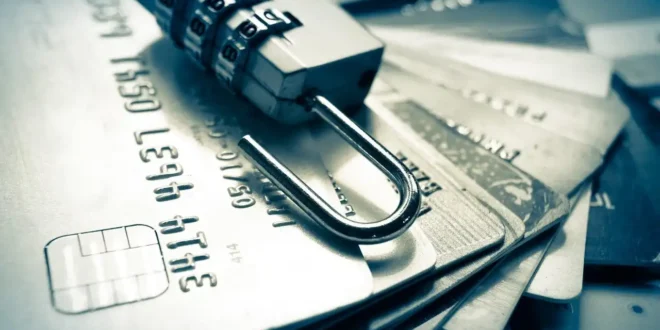Protecting your brand’s data is paramount to avoid significant losses and maintain your reputation. Over 80 percent of companies have experienced the threat of a data breach, putting customer information at risk. Knowing what to do to keep unauthorized users out is crucial to maintaining PCI compliance.
A PCI compliance test is the perfect way to check your network and security policies. You can determine if your business is progressing with your security strategy. It’s a necessary step to look out for your brand’s future and avoid hefty fines.
The good news is you’ve arrived at this practical guide to performing a PCI DSS assessment. Continue reading to find the vulnerable areas in your network today!
What Is PCI Compliance Testing?
PCI compliance testing is a way to assess your brand’s network security. It’s also a way to ensure your business adheres to the Payment Card Industry Data Security Standards.
The purpose of the testing is to protect your customers’ card information. The PCI DSS covers the requirements all businesses must comply with. It applies when transmitting, storing, or processing debit or credit card information.
Many businesses use the PCI compliance test to identify threats in the network. You can identify and address these security issues before they become more costly.
Understanding the difference between PCI testing and other cybersecurity tests is critical. PCI is more precise and provides a practical path toward protecting cardholder information.
Steps of a PCI Compliance Test
Knowing how a PCI compliance test benefits your business is crucial if you want to save money and maintain customer confidence. A systematic approach will help you cover all your needs during testing.
Having guidance through the process can shed light on the dos and don’ts of compliance testing. Here’s a look at the steps to boost your security policies and meet the PCI DSS standards.
Review the PCI DSS Requirements
Before using the PCI compliance test, analyze the requirements to understand expectations. The Payment Card Information industry has standards you must meet.
There are 12 core requirements you’re expected to meet with your network security. Learn about each requirement and devise a strategy to meet all of them. You’ll enjoy peace of mind knowing your bases are covered.
Assess Your Security Posture
After looking at the requirements, analyze your startup or small business’s security posture to see how many security standards your company meets for PCI. Some critical components to look at are your security policies, network infrastructure, and procedures.
You can use your analysis to find vulnerabilities in your network that hackers could use to steal customer information. Addressing these areas of weakness is a substantial step toward maintaining your PCI compliance for your merchant services.
Implement Control and Policy Changes
You can begin implementing changes now that you know what’s expected and where you fall short. Your brand’s security gaps can be closed using virus-scanning software, firewall policies, and employee training.
It’s your opportunity to evolve and stay a step ahead of hackers. Your customers will use your products or services with confidence. Updating your firewall policies and using intrusion detection software will improve your network security.
Combine these changes with more robust access controls. You’ll limit who can access the customer data and card information. Protecting the information from malicious actors is half the battle for PCI requirements.
Use a Vulnerability Scan
A vulnerability scan is among the most valuable options to find the holes in your network security. The scan will work in the same way a hacker would. It will probe your network and identify weak areas hackers will use to enter without detection.
It’s best to use approved scanning vendors for accurate results. You’ll understand what you must change to maintain compliance and avoid fines.
Conducting these scans throughout the year is a good rule of thumb. Hackers are constantly evolving, and you must stay ahead of them. You’ll stay informed about the threats facing your small business.
Use Penetration Testing
The vulnerability scan provides beneficial information about the gaps in your network. The penetration scan is a different level of testing. It’s designed to mimic a real-world cyber attack on your business network.
The purpose is to determine how your business network would handle an organized cyber attack. It’s scary to consider, but it’s the reality of your challenges as a business owner.
Find professional services to perform these tests. Their feedback is invaluable in telling you how to protect payment card information. You want to thoroughly examine your network to find the smallest cracks and close them with firewall policies.
Address Vulnerabilities
The penetration test will make any vulnerable spaces in your network apparent. After identifying them, assess your options to close these gaps and protect your network.
Typical solutions include patching software, adding security measures, and updating security policies. These measures will strengthen your network and make hackers think twice about targeting you.
Retest Compliance
After making the recommended changes, retest your network to see how it stacks up. You want to take this necessary step to meet the PCI requirements. You want to ensure all potential issues have been resolved.
Document and Maintain Records
The last thing to do with PCI testing is document each step. Should you face an audit, you’ll have proof of your efforts to meet PCI requirements.
It’s an excellent way to demonstrate your brand’s commitment to PCI compliance. You can compare each future PCI DSS assessment to the documents from your first test. It’s the most effective way to monitor your brand’s progress.
Conduct a PCI Compliance Test for Your Network
Understanding the importance of a PCI compliance test is critical to growing your brand and gaining customer confidence. The PCI DSS assessment aims to ensure your company is protecting cardholder information.
Use penetration tests to identify vulnerable areas and determine how your network will perform against attacks. Maintain documents of your testing and security policies to protect against audits.
Technology is a powerful tool; you must learn to leverage it for your brand’s benefit. Check out our Tech guides and articles for more practical insights today!
 SlushWeb Live the Way You Love
SlushWeb Live the Way You Love


